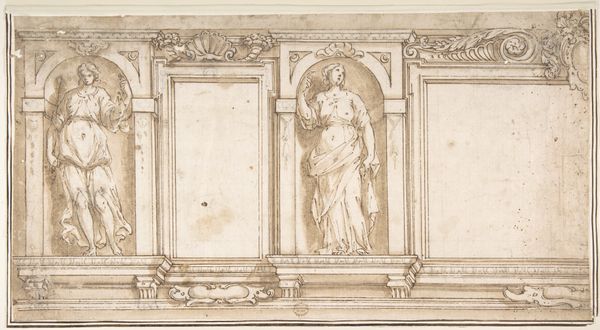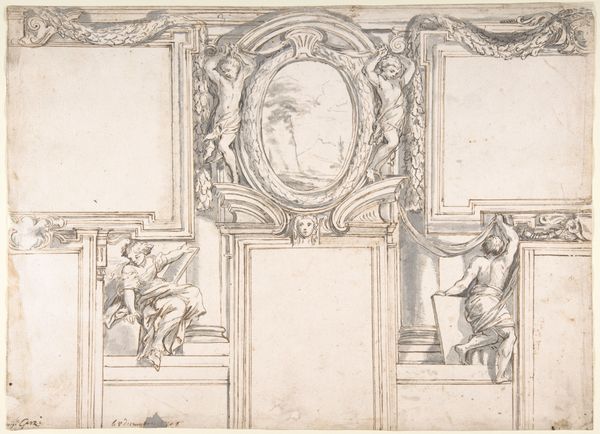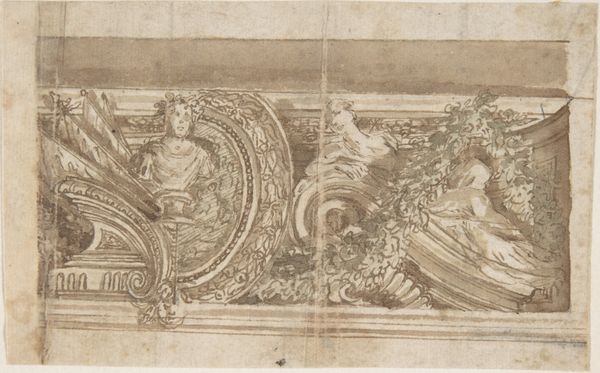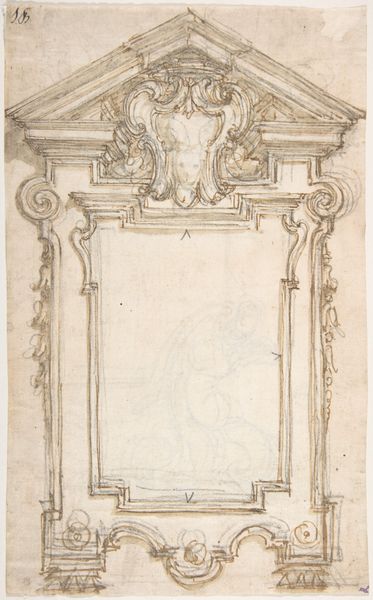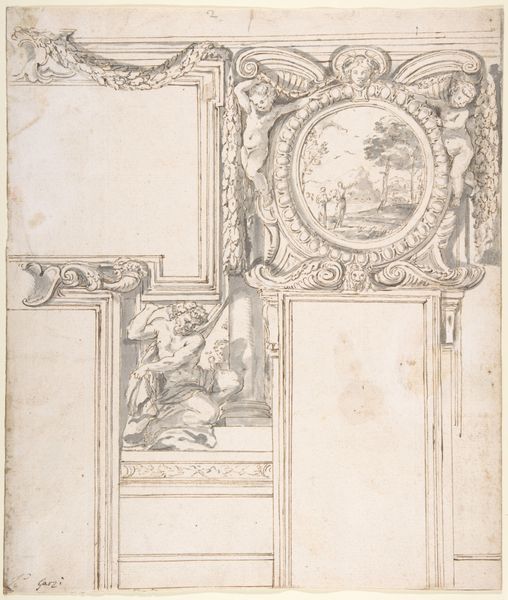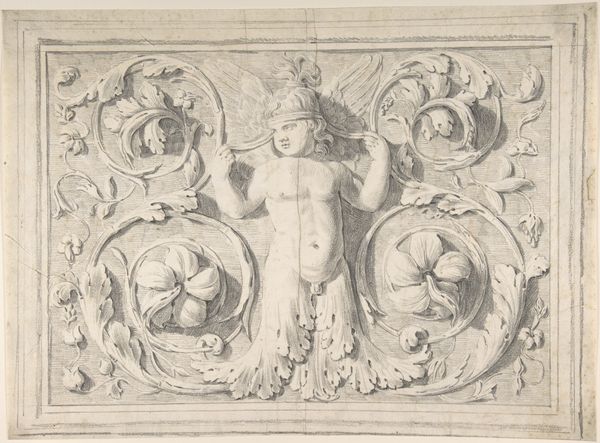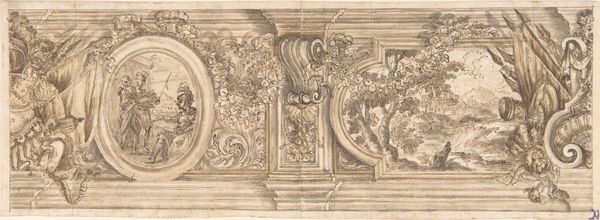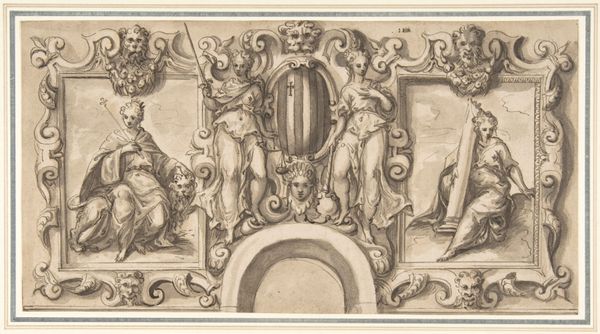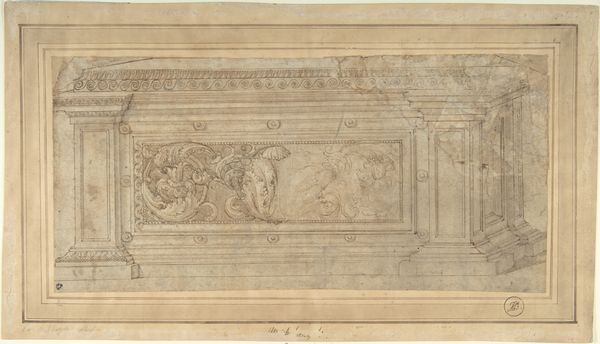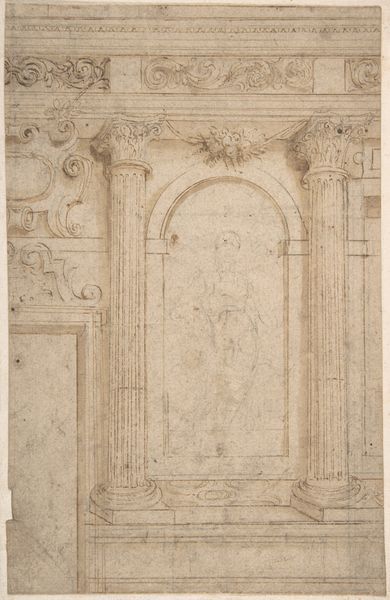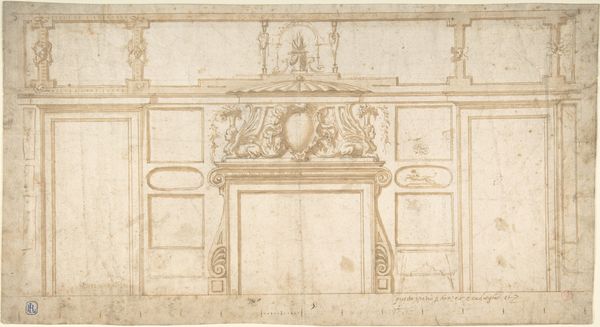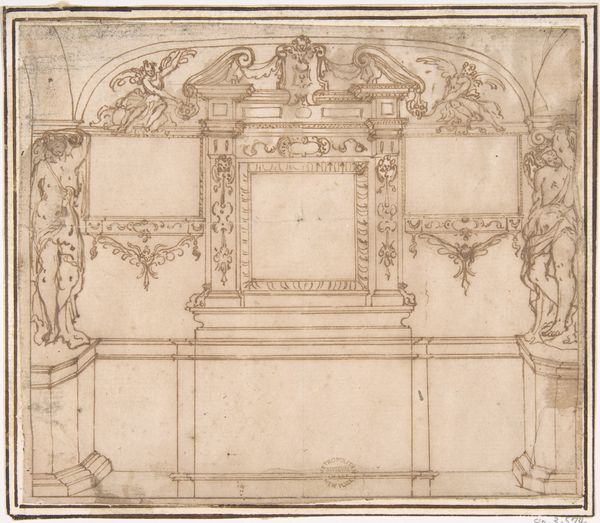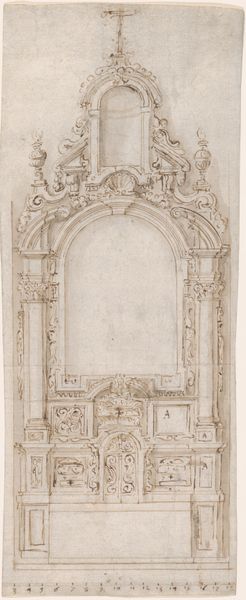
Design for a Decorated Frieze with Alternation of Cartouches and Winged Putti 16th century
0:00
0:00
drawing, print
#
drawing
# print
#
figuration
#
11_renaissance
#
coloured pencil
#
history-painting
#
italian-renaissance
#
nude
Dimensions: 2 5/8 × 4 15/16 in. (6.6 × 12.6 cm)
Copyright: Public Domain
Editor: This is "Design for a Decorated Frieze with Alternation of Cartouches and Winged Putti" from the 16th century, by Luzio Luzzi. It's a drawing, currently held at the Metropolitan Museum of Art. The alternating figures and decorative elements give it a sense of rhythm. What can you tell me about this design, what strikes you? Curator: What strikes me immediately is how this design speaks to the ongoing negotiation between classical ideals and the lived realities of Renaissance society. The winged putti, classical motifs really, are juxtaposed with what? Barely-veiled signifiers of wealth, power. Think about where this frieze would be placed. Whose stories would it be framing? Editor: So it's about the power structures embedded in the design itself? The frieze is part of the decor of a powerful person, but that the use of those nude "cherubs" complicates the picture? Curator: Exactly. Consider the nude form. Who gets to be represented? Whose bodies are aestheticized, and for whom? The putti, traditionally symbols of innocence, are here framing potentially fraught narratives. How do the bare bodies relate to notions of gender, power, and perhaps, even, subjugation within the aristocratic home? The bodies performing this role: a pretty bizarre situation once you start to think about it. Editor: So the artist may have been aware, or maybe complicit with the problematic representation of children in such a setting. Does that make this beautiful drawing subversive in some ways? Curator: It is a point to consider, definitely. Remember the Renaissance was no "golden age". Designs such as these give us a chance to think through uncomfortable realities, through the beautiful and the unsettling, and to keep pushing our thinking. It shows we must always consider context, especially regarding themes of gender and power when looking at art history. Editor: Thank you. It definitely gives a different perspective on a decorative piece.
Comments
No comments
Be the first to comment and join the conversation on the ultimate creative platform.
